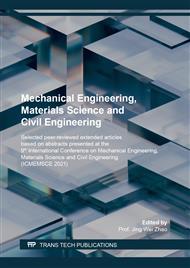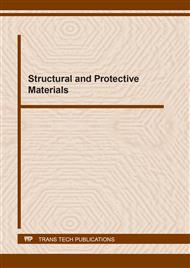p.3
p.11
p.25
p.31
p.37
p.47
p.53
p.61
p.67
Numerical Analysis Nucleation and Growth Conditions of Single-Crystallinity Control during Laser Surface Modification of Ni-Based Single-Crystal Superalloy Part I: Thermal and Chemical Determinants
Abstract:
Nucleation and growth conditions of single-crystallinity control are convincingly elaborated by multi-scale mathematical modeling of heat and mass transport to totally abate undesirable weld defects, e.g. disoriented crystal and hot cracking inside molten pool of nonequilibrium crystallization, in order to illustrate the usefulness of predictive capability through theory and experiment procedures. Crystal growth is complicated by crystallinity-dependent thermal and chemical driving forces in front of dendrite tip during viable laser surface modification of Ni-based single-crystal superalloy. These two thermal metallurgical determinants play crucial role in crack-insusceptible columnar crystal growth, which is favorably oriented throughout weld depth. There is particular challenge in complete elimination of disoriented crystal, i.e. stray grain formation, for acceptable surface quality. Conservative (001)/[100] crystalline orientation is desired to diminish Al concentration and supersaturation, and morphologically satisfy epitaxial growth kinetics to successfully lessen central cracking with satisfactory variability of laser power and welding speed. Comparatively, (001)/[110] crystalline orientation is disadvantageous to asymmetrically augment Al concentration and supersaturation and aggressively increase interface instability, microstructure heterogeneity and hot cracking vulnerability along disoriented crystal boundaries. Disoriented crystal is increasingly withstood if the Al concentration and supersaturation in front of dendrite tip are low enough and crack-unsusceptible part is relatively large enough in case of attractive (001)/[100] crystalline orientation with optimal range of heat input to ameliorate microstructure homogeneity. Crystalline orientation region varies with diverse welding configurations, and epitaxy across solid/liquid interface is also sensitive to heat input of laser processing, which necessitate high efficient welding conditions optimization. Considerable effort is made to distinguish diffusion-driven crystal growth between a series of combinations of multiple welding conditions, such as critical welding configuration and heat input. Metallographically, the morphologies of crystal growth and hot cracking are experimentally observed to consistently support kinetics calculation result and well explain correlation between solidification behavior and crystal growth.
Info:
Periodical:
Pages:
37-46
Citation:
Online since:
April 2022
Authors:
Price:
Сopyright:
© 2022 Trans Tech Publications Ltd. All Rights Reserved
Share:
Citation:



